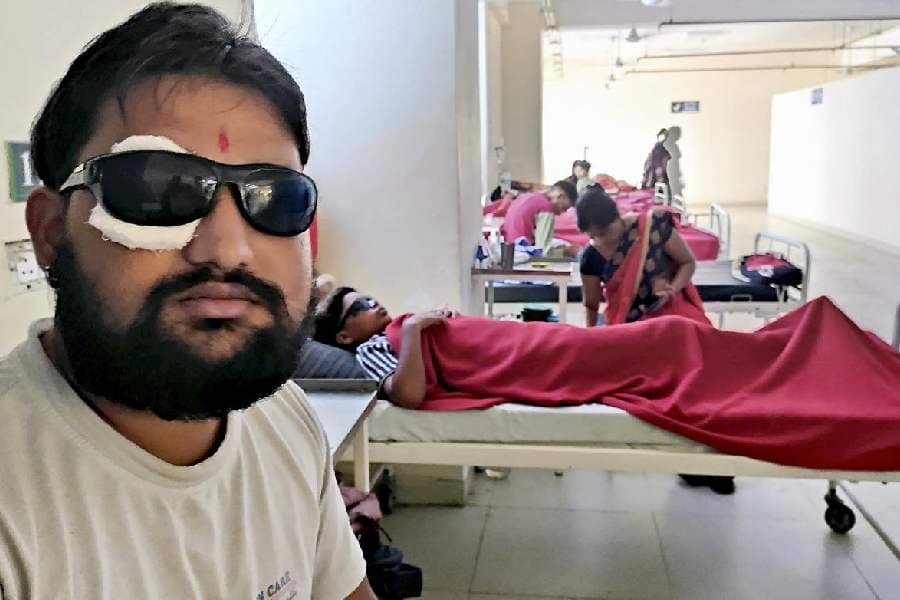We're loading the full news article for you. This includes the article content, images, author information, and related articles.
A viral social media trend in India involving improvised chemical firecrackers has caused hundreds of eye injuries, highlighting potential dangers in Kenya where the core chemical is available and regulatory gaps persist.

A wave of devastating eye injuries has swept across northern India, leaving hundreds of children and young adults permanently or partially blind following the Diwali festival. The cause is a crude, homemade device known as a “carbide gun,” which has gained alarming popularity through viral social media videos. According to Indian health officials, as of late October 2025, nearly 400 children across the states of Madhya Pradesh and Bihar have been hospitalized with severe eye injuries. In Bhopal, the capital of Madhya Pradesh, officials reported that 186 people sustained eye injuries, with at least 15 requiring surgery and 10 suffering permanent eye damage.
The device itself is simple and dangerous. Typically constructed from a plastic pipe and a lighter, it uses a small amount of calcium carbide—a chemical compound readily available in Kenya—and water. The reaction between the two produces flammable acetylene gas. When ignited, this gas creates a loud, gunshot-like explosion with fiery sparks. The danger lies in its unpredictability. Many injuries occurred when a delayed explosion happened just as a child peered into the pipe to see why it had failed to ignite, causing the blast to rupture their cornea and retina.
While there are no reports of carbide guns being used in Kenya, the incident in India serves as a stark cautionary tale due to the local availability of calcium carbide. The chemical is used industrially for welding and manufacturing plastics. However, a 2014 investigation by The Star newspaper revealed its rampant and illegal use by traders in Nairobi and Mombasa to artificially ripen fruits like bananas and mangoes, despite the serious health risks it poses. Kenyan law does not specifically prohibit the use of calcium carbide, and regulatory bodies have previously lacked the equipment to test for it on imported and local produce.
Calcium carbide is a hazardous substance. According to safety data sheets, contact with the eyes can cause severe irritation, burns, and permanent damage. The chemical itself contains toxic impurities like arsenic and phosphorus, which pose further health risks, including potential damage to the nervous system and vital organs. The primary danger, as demonstrated in India, is the production of highly flammable and explosive acetylene gas upon contact with moisture.
The rapid spread of the carbide gun trend in India was fueled by social media platforms, a phenomenon that resonates strongly within Kenya. A 2025 report noted that over 70% of Kenyan teenagers spend more than three hours daily on social platforms, where they are exposed to viral trends and dangerous challenges. This high level of engagement creates a fertile ground for the rapid dissemination of risky behaviors, often without an understanding of the consequences. The Indian authorities admitted they were caught off guard by the scale of the health crisis spawned by the social media craze.
This raises critical questions for Kenyan authorities. The Kenya Bureau of Standards (KEBS) has previously banned the importation of certain toys from China due to toxicity concerns and regulates fireworks under the Explosives Act, Cap 115. However, the carbide gun is not a manufactured toy but an improvised device made from easily accessible materials. Its components are not classified as fireworks, potentially allowing them to bypass existing regulations.
The incidents in India underscore a global challenge: the intersection of readily available hazardous materials, the powerful influence of social media on youth, and the difficulty of regulating improvised devices. Public Health Principal Secretary Mary Muthoni recently, on Monday, October 27, 2025, urged parents to ensure children are constructively engaged during holidays to prevent exposure to harmful substances, a warning that takes on new gravity in this context. The Indian tragedy is a clear signal that vigilance is required not only at the borders and in markets but also in the digital spaces our children inhabit. Without proactive public awareness campaigns and stricter controls on hazardous chemicals, Kenya remains vulnerable to a similar, preventable crisis.
Keep the conversation in one place—threads here stay linked to the story and in the forums.
Other hot threads
E-sports and Gaming Community in Kenya
Active 6 months ago
Popular Recreational Activities Across Counties
Active 6 months ago
The Role of Technology in Modern Agriculture (AgriTech)
Active 6 months ago
Investing in Youth Sports Development Programs
Active 6 months ago